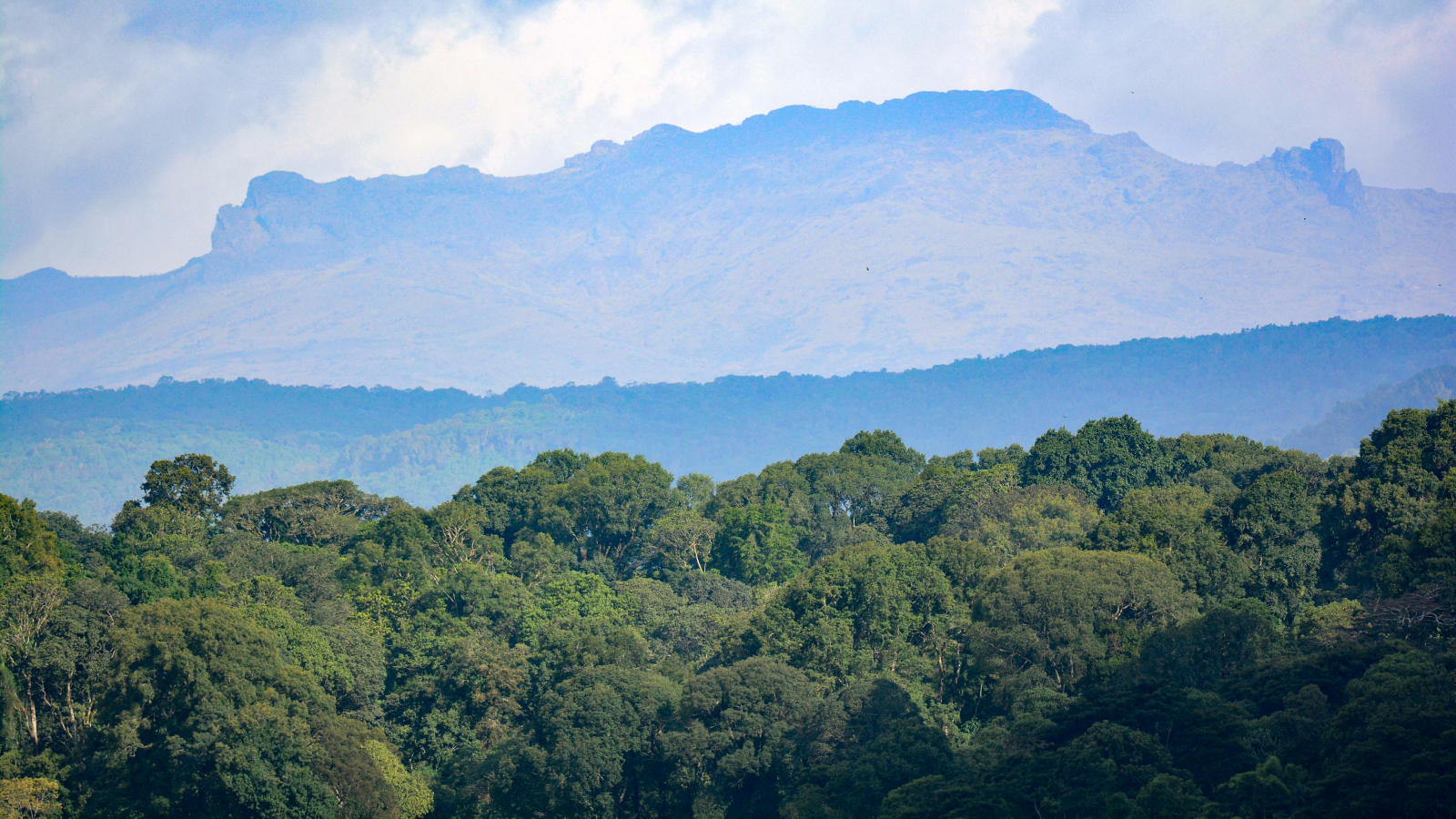2,000-year-old bed barricade unearthed in Pompeii house — likely a family's last attempt to escape Vesuvius' eruption
In a house in the ruins of Pompeii, archeologists have discovered evidence that a family of four attempted to barricade a door with a bed during Vesuvius's terrible eruption.
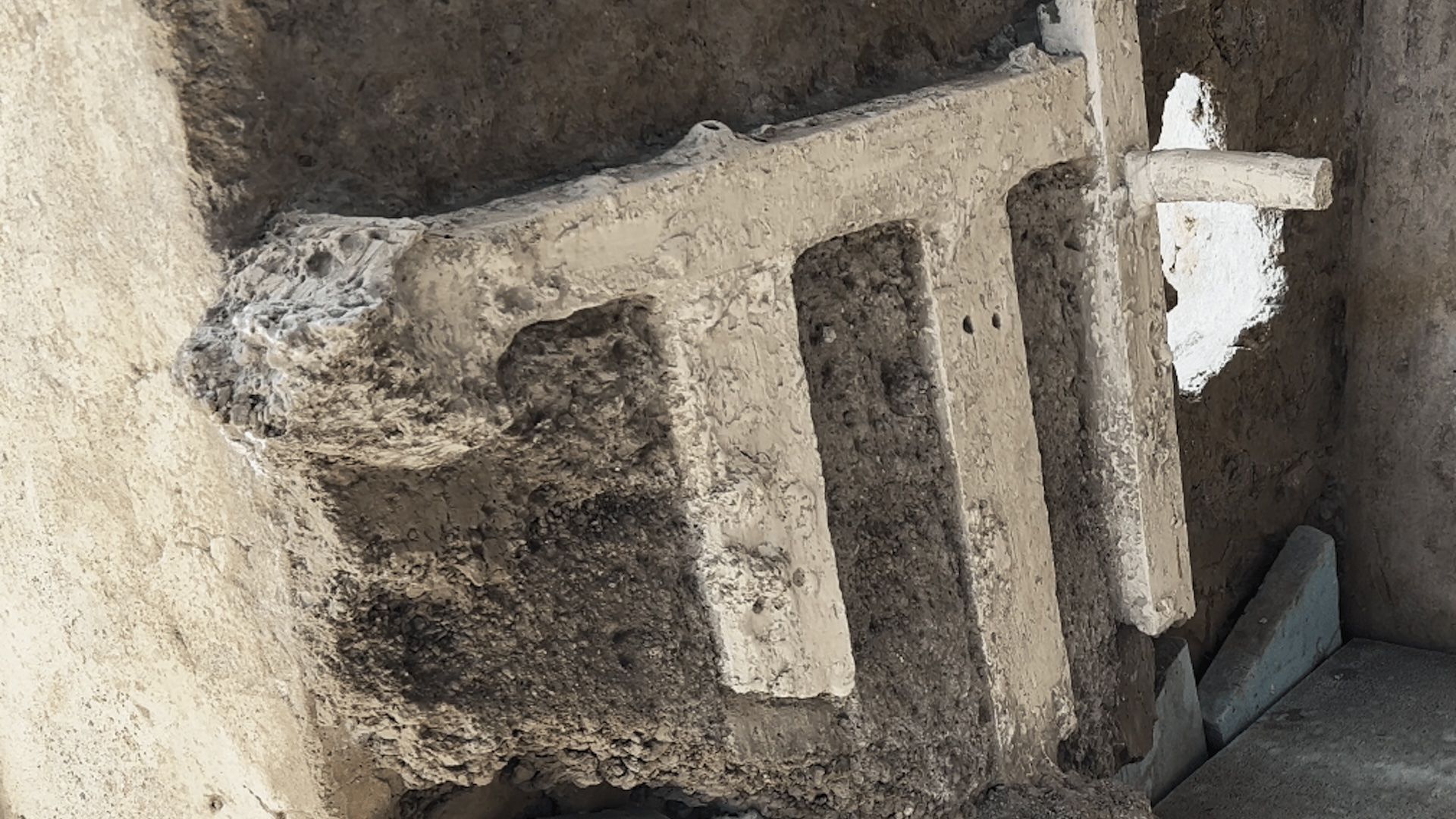
Archaeologists have unearthed heartbreaking evidence of a family's last-ditch attempts to flee from the incoming destruction during the eruption of Mount Vesuvius in A.D. 79.
During a recent excavation of a house in Pompeii, the remains of four people, including a child, were discovered alongside a bed that had been moved to block a bedroom door in what was likely the family's final endeavor to escape the searing hot ash, gas and dust that enveloped the city. The findings were published April 30 in the online e-journal Scavi di Pompei.
"In this small, wonderfully decorated house, we found traces of the inhabitants who tried to save themselves, blocking the entrance to a small room with a bed," Gabriel Zuchtriegel, director of the Archeological Park of Pompeii, said in a statement translated from Italian.
The eruption of Vesuvius in A.D. 79 is one of the most catastrophic volcanic events in history, having famously destroyed the Roman cities of Pompeii and Herculaneum lying in its foothills. Vesuvius is a stratovolcano, a type known for having extremely violent eruptions due to its magma containing higher levels of gas. This results in much greater pressures building up beneath the ground, and consequently more explosive eruptions.
When Vesuvius first exploded, it sent a massive column of ash and volcanic rock into the air, which rained heavily down onto the nearby towns, collapsing roofs and suffocating residents. Then, a series of pyroclastic flows (fast-moving, extremely hot avalanches of gas, ash and volcanic debris) swept down the mountain, incinerating and burying everything in their path and leaving the towns' inhabitants buried in a tomb of ash.
Related: Pompeii victims aren't who we thought they were, DNA analysis reveals
Pompeii was buried under about 20 feet (6 meters) of volcanic material after the eruption. The city was then lost to time, until its rediscovery over a millennium later. Pompeii and Herculaneum have been extensively examined by archaeologists since excavations officially began in the 1700s, uncovering buildings, frescoes, belongings and human remains.
Get the world’s most fascinating discoveries delivered straight to your inbox.
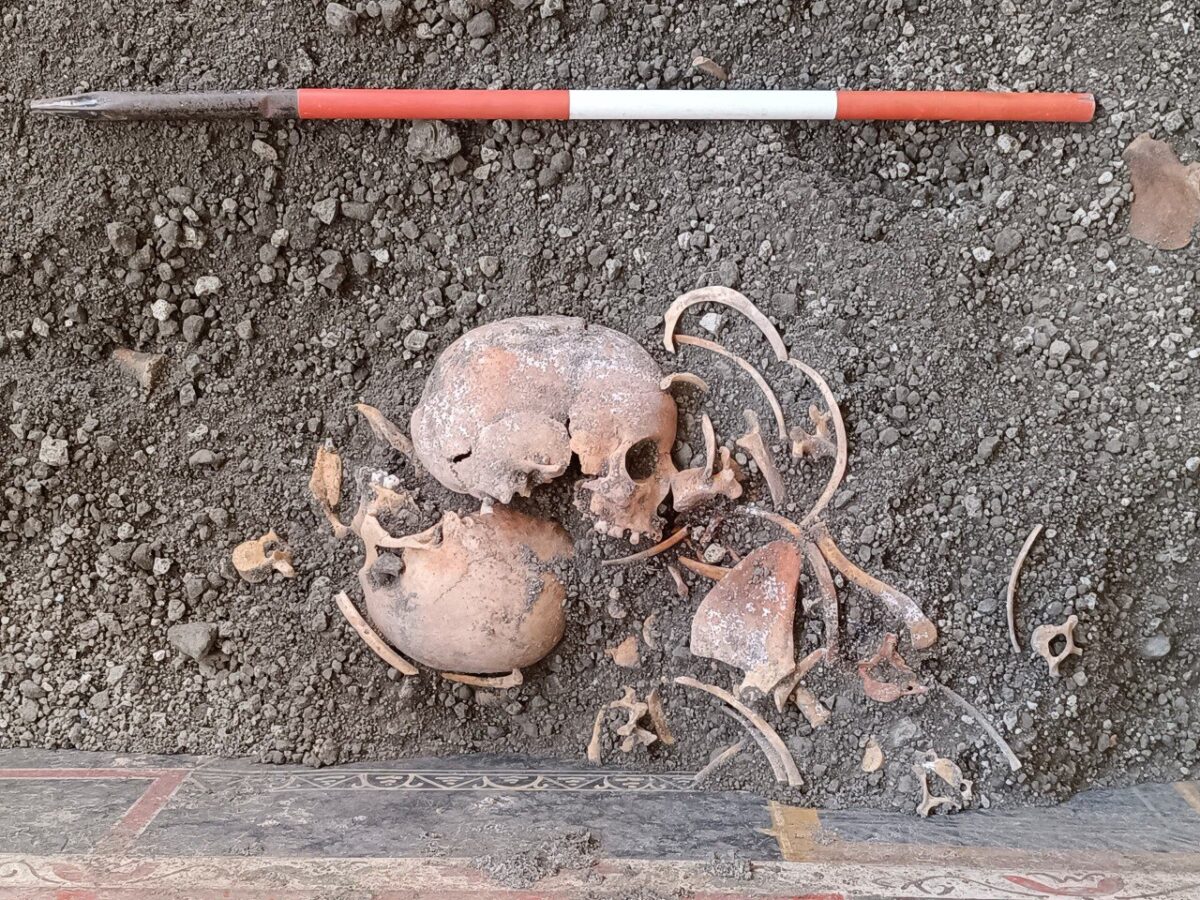
The remains of one of the people who lived in the house.
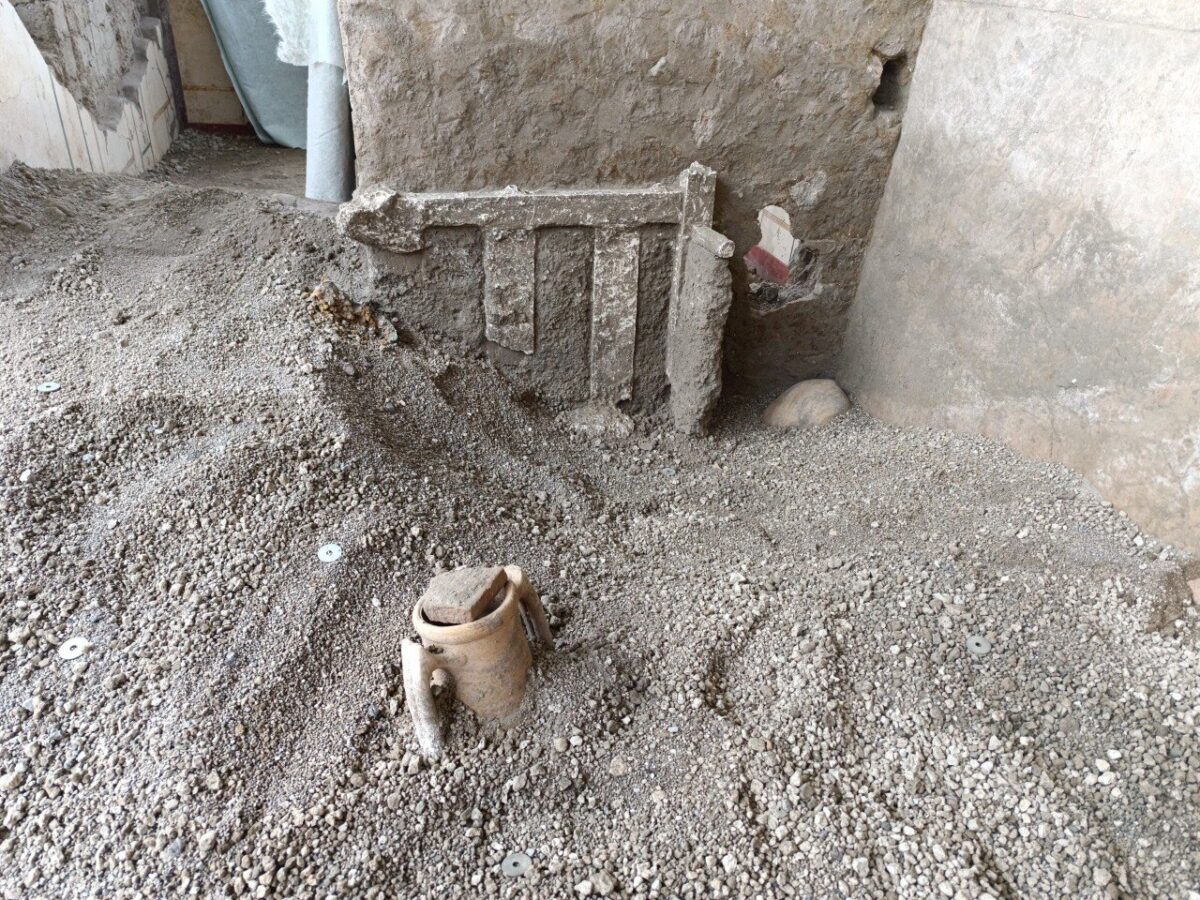
Remains of the bed the family had attempted to use to barricade a door closed during the eruption of Vesuvius.
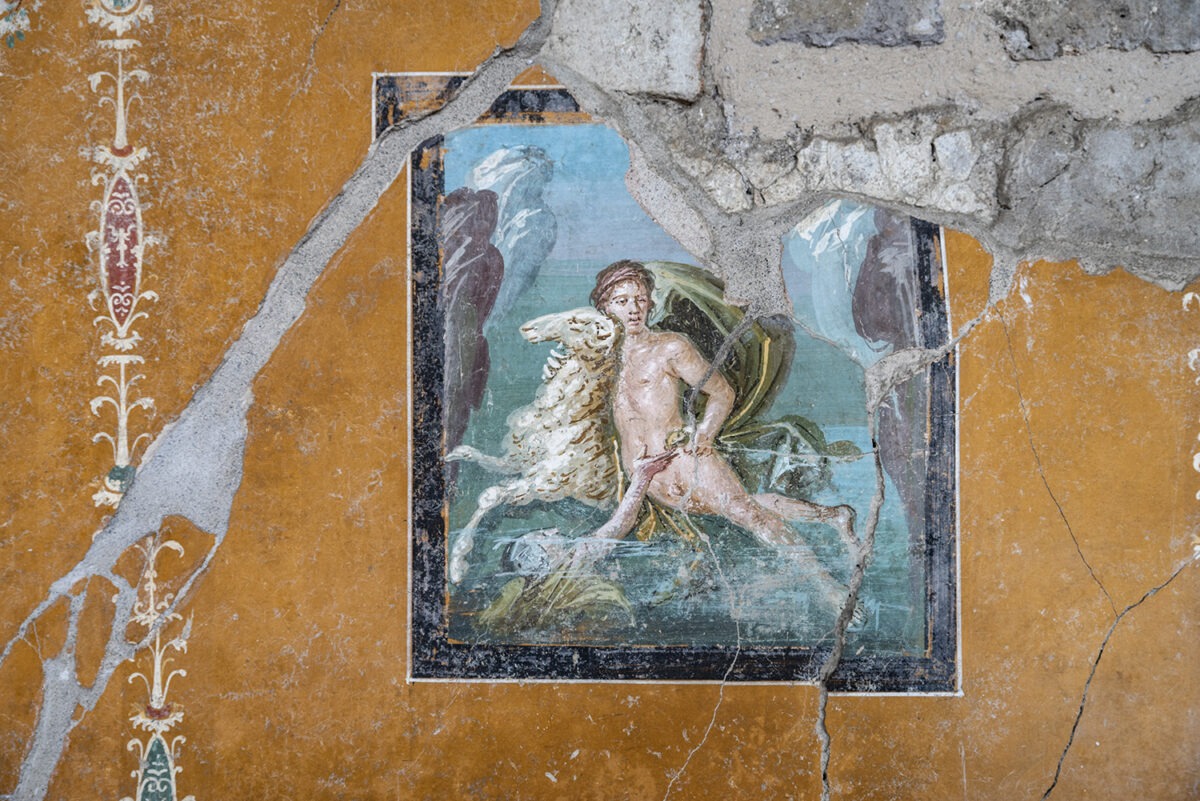
The painting of Helle and Phrixus for which the house is named.
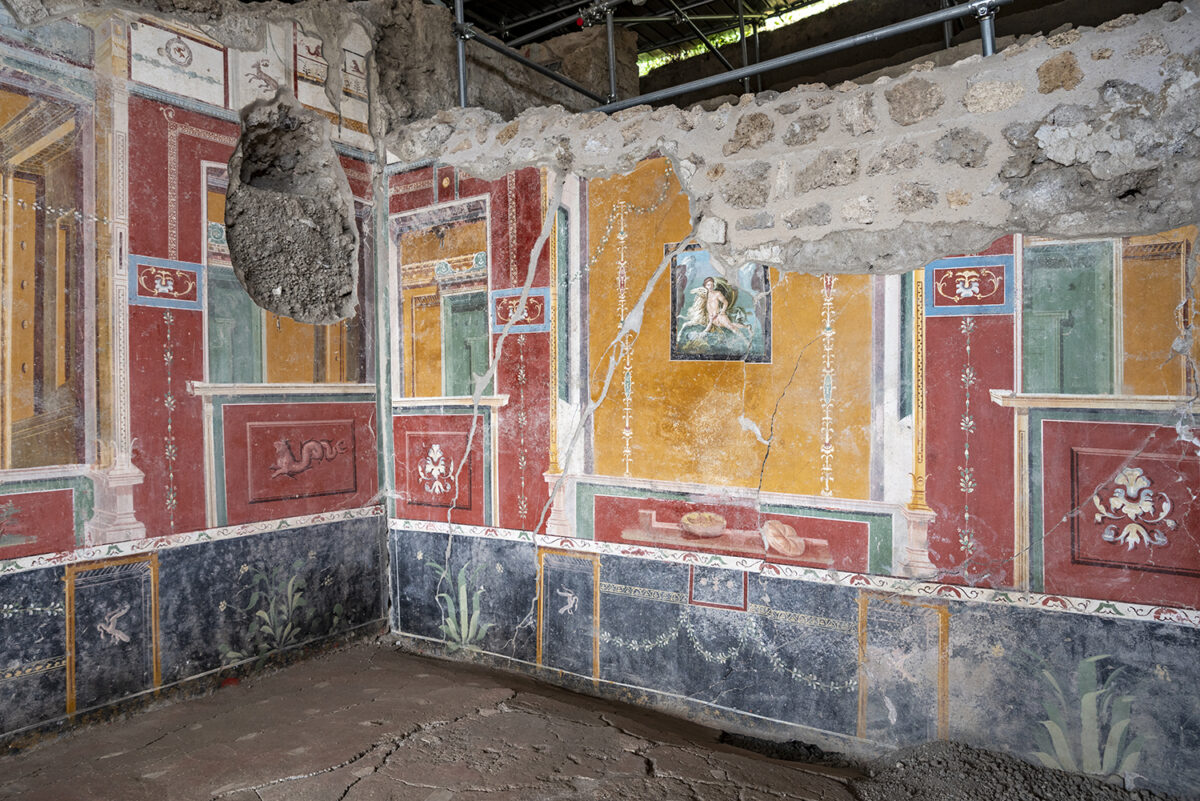
More painting on the walls of the house.
Barricaded door
The house in the new study, named casa di Elle e Frisso, or the house of Helle and Phrixus, was named for a mythological painting found in one of its rooms, depicting the twins Phrixus and Helle fleeing from their stepmother on a magical ram with a golden fleece, before Helle fell to her death in the waters below.
The house of Helle and Phrixus was first found in 2019 during excavations of a neighboring site called the House of Leda and the Swan. In this most recent excavation of the house of Helle and Phrixus, which unearthed the room with the bed barricade, a number of other details were found in the home, including a water basin, a banquet hall, and a room with a hole in its roof to collect rainwater. They also discovered a bronze amulet or "bulla," likely worn by the child, as well as a number of drinking vessels, storage vessels, bronze scales and bronze cooking pans.

The archaeologists created a cast of the bed that the family had used in an attempt to protect themselves from the deluge of ash, likely through the hole in the roof.
"This is because the lapilli, the volcanic stones that risked invading the space, entered through the opening in the roof of the atrium," Zuchtriegel said. "They didn't make it, in the end the pyroclastic flow arrived, a violent flow of very hot ash that filled here, as elsewhere, every room, the seismic shocks had already caused many buildings to collapse."
Due to the absence of a number of decorations and other elements archaeologists might have expected to find in the home, they suggest that the family may have been in the process of renovating their house at the time of the eruption. The presence of the fresco of Phrixus and Helle, as well as the medium-size home, indicates that the family were middle or upper class in Roman society.
"Excavating and visiting Pompeii means coming face to face with the beauty of art but also with the precariousness of our lives," Zuchtriegel said.
Pompeii quiz: How much do you know about the Roman town destroyed by Mount Vesuvius?

Jess Thomson is a freelance journalist. She previously worked as a science reporter for Newsweek, and has also written for publications including VICE, The Guardian, The Cut, and Inverse. Jess holds a Biological Sciences degree from the University of Oxford, where she specialised in animal behavior and ecology.
You must confirm your public display name before commenting
Please logout and then login again, you will then be prompted to enter your display name.


